28-Days-to-Lean Meal Plan
With the right plan and the right discipline, you can get seriously shredded in just 28 days.
Read article
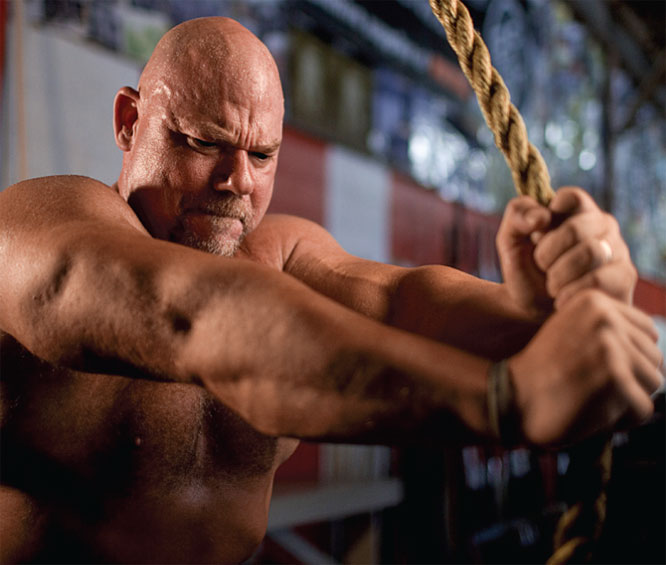
Dave Tate goes to the gym for the same reasons you do. He’s that kid who turned to lifting weights and stuck with it because lifting weights brought him to places nothing else could or would. He found training the same way you did, he’s not letting go of it as hard as the world pulls, and he’s sparked an industry-wide revolution in the process.
Tate, founder and CEO of fitness industry giant Elite FTS, tried out the Internet for the first time in 1998, looking for information to help enhance his own training. Working as a trainer at the time—and training as a competitive powerlifter with Louie Simmons at Westside Barbell Club in Columbus (OH)—he noted the dearth of quality training sites online and sought to remedy the situation by developing a simple Q&A site where readers could find no-bullshit lifting information provided by Tate and others he respected.
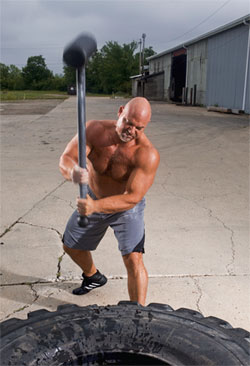 What he never envisioned, however, was a multi- million-dollar fitness conglomerate that’s become the de rigueur equipment supplier for dozens of major universities and professional sports franchises. Tate’s initial notion—formed on a computer in a spare bedroom and financed on a credit card—was to simply bring people together and expose his readership to the merits of multiple disciplines with which they weren’t entirely familiar.
What he never envisioned, however, was a multi- million-dollar fitness conglomerate that’s become the de rigueur equipment supplier for dozens of major universities and professional sports franchises. Tate’s initial notion—formed on a computer in a spare bedroom and financed on a credit card—was to simply bring people together and expose his readership to the merits of multiple disciplines with which they weren’t entirely familiar.
“Everything was segmented back then,” Tate says. “Strength coaches did what they did, powerlifters did what they did, and personal trainers did what they did. Nobody respected the other guys. Trainers said nobody else knew what they were doing because they weren’t certified. Coaches said trainers had no real world experience. And nobody thought physical therapists knew what they were doing because they couldn’t lift any real weight. It was this whole Ping-Pong battle going on all over the place.”
Over the next decade, Tate transformed his site into cyberspace’s ultimate filter—the launching pad for virtually every new and innovative training idea in the fitness industry today. From kettlebells to the Prowler to band and chain training, Tate himself may not have invented any of it, but his stamp of approval is quite possibly the most powerful form of validation in the business. If you see someone pushing a Prowler, benching with a fat bar, or flipping a tire, chances are you can trace the concept’s informational lineage back, somehow, to Tate and his site’s Q&A staff.
“You’ve got all this stuff going on all over the world,” he says, “and the bigger you can get the top of the filter to pull all this stuff in, the more likely you are to have something good come out the other side. That’s where ideas like the Prowler are generated and refined.”
The process is simple, but the gamut that an idea has to run is decidedly not. A product is pitched to Tate as something EFS should carry. He’ll then run it past his staff—renowned specialists like Alwyn Cosgrove, Joe DeFranco, and Matt Kroczaleski—sending them prototypes for their own use if necessary. From here, Tate gathers feedback and suggests modifications to his manufacturers. What comes back is a piece of equipment high- level coaches and trainers can actually use—or, as is often the case, another piece of junk for Tate’s sizable scrap heap. “Vendors and wholesalers are really good at what they do,” Tate says, “which is making products. They’re not so good at making products that work at the grassroots level, and that’s where our process of running stuff through the filters helps everyone.”
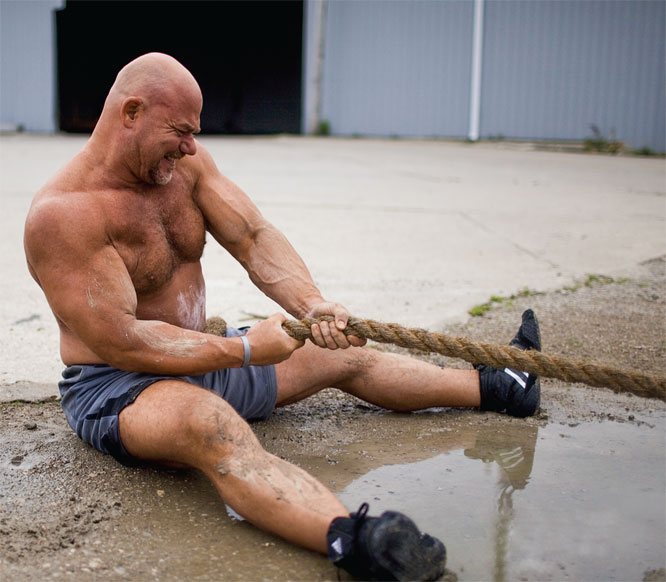
Next, products like the Prowler make it into heavy rotation in big-time training centers like the ones owned and run by Tate’s select group of trainers, whom he entrusts to conjure up original ideas for their use. New concepts. Set and rep schemes. Unique training strategies. These trainers throw their stuff on YouTube, often with moves demonstrated by world-class athletes, and that’s when things get interesting.
“These guys try it, and it works, but the granddaddy of the whole thing is the readership,” says Tate. “They try what they see our guys doing, they see for themselves that it works, and that’s when it starts to go viral. It spreads. The Prowler and fat bars and all that stuff? That’s how it happened.”
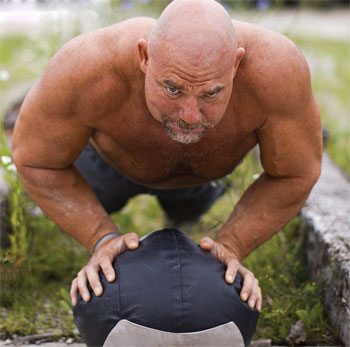 KEEPING IN TOUCH
KEEPING IN TOUCHIn any industry, you don’t stay abreast of new developments by sitting on your ass in an office all day doing nothing. The core of Tate’s game—and the primary thing he tries to get across to everyone he comes in contact with, every day—is passion. Passion for training, passion for his work, passion for helping his customers get better, and a passion for weight training that changed his life back when he was an angry, dyslexic 98-pound weakling growing up in Findlay, OH. When you’ve peaked as an athlete and built a successful business, there’s a certain dignity inherent in busting your ass in the gym when it supposedly doesn’t matter anymore. Tate still trains, and trains hard, in the gym he designed himself: the massive Elite FTS equipment showroom, dubbed “The Compound,” that doubles as a venue for his legendary Underground Strength Sessions—weekends where dozens of the world’s strongest men come to EFS headquarters in London, OH, for coaching, hard training, and a peek at the company’s latest gear offerings.
“The way I’ve trained has changed from when I first started,” Tate says, “but the core principles of why I walk through the door have always been the same. I just love doing this shit, and it’s a competitive advantage because when I’m in there killing myself, obsessed with it as I’ve always been, it means I can relate to that core customer at the end of the line, because that’s exactly what he’s doing.”
To understand why people exercise the way they do, it’s essential to note where we’ve come from both in terms of training science and as a society. To Tate, the two mirror each other, and the gym functions as a microcosm of popular culture—with “minimalism” having been in vogue for the past half-decade or so. That style, like every cyclical fitness trend before it, seems destined to fade away sooner rather than later, and Tate and EFS are positioned to push it out the door.
“Those ‘get in, get out’ programs where you do only two exercises a couple of times a week became popular because they resonated with the values of a lazy generation,” he says. “Generation X just wanted to do the minimum work required and nothing more. That’s a broad generalization, but it seems as if these newer generations are a little different. It seems to me they can see through the bullshit a little better.”
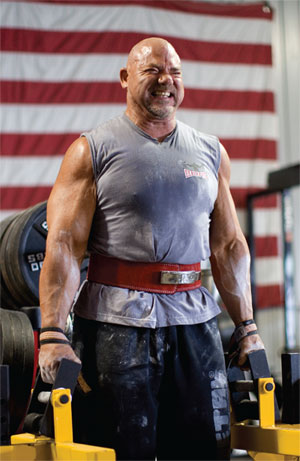
What Tate says this means is that higher-volume training is on its way back—a paradigm change you’ll see reflected throughout the fitness industry. In a hyper-competitive world where veteran employees are being laid off left and right, people know they’ll have to work their asses off just to maintain the status quo. And provided they care, that attitude transfers to the way they approach training. Tate points to the explosion in popularity of MMA-style training as evidence that the industry is poised for major change.
“Those aren’t quick workouts,” he says. “That kind of stuff can have you training five hours a day. These guys may not necessarily like to fight, but they’re starting to see that they can work harder, and that the hard work they’re doing will pay off. They’re calling out the generation that came before them, saying, ‘OK, you do that much, and that’s what it did for you. I can do this much extra, and if I do, I’ll kick your ass.’”
Commercial “big box” gyms will always be what they are, and they’ll simply continue to serve the same population of members for whom training isn’t a major priority. In fact, Tate says they’re going to continue narrowing down that customer base to exclude just about everyone likely to deviate from their perceived exercise norm. Olympic lifters haven’t been seen in 30 years, powerlifters got the boot 20 years ago, and hardcore bodybuilders will be the next to go. And these folks all need places to train.
“These private warehouse places are going to grow like crazy over the next five years,” says Tate. “Commercial gyms are going to keep moving away from that hardcore training market, and that just serves to expand that market for these specialty places. They’re going to be very, very profitable.”
With all of it—more volume, harder work, and the way the industry is evolving—you’re looking directly into the top of Tate’s filter. There’s a sense that something is brewing, but nobody—not even Tate—can say exactly what’s going to come out the other end once these ideas have been through the mill. It’s too early to say where it’s all leading us or what’s likely to happen.
For Tate and Elite Fitness Systems, however, it’s the people on the fringes who count. When his overweight cousin “Larry,” who hasn’t dieted or done a push-up in 10 years, approaches him at Thanksgiving dinner looking for nutritional and training advice, Tate’s eyes glaze over because Larry isn’t the guy he’s in business to help. There are people, however, who have the knowledge, time, and motivation to set Larry straight, and those are the people whose attention Tate wants—the ones who already care.
“We’re in business to work for and improve the enthusiast,” he says, “because everything that eventually gets into the mainstream starts with those guys, those early adapters. If you walk into a discount chain store, you’ll find kettlebells and Prowler knockoffs now, but that came down from professionals who worked them in and figured out what to do with them. That’s how it works. Two years from now, it’s going to be something else, and we’re going to be the ones who put it in the filter.”